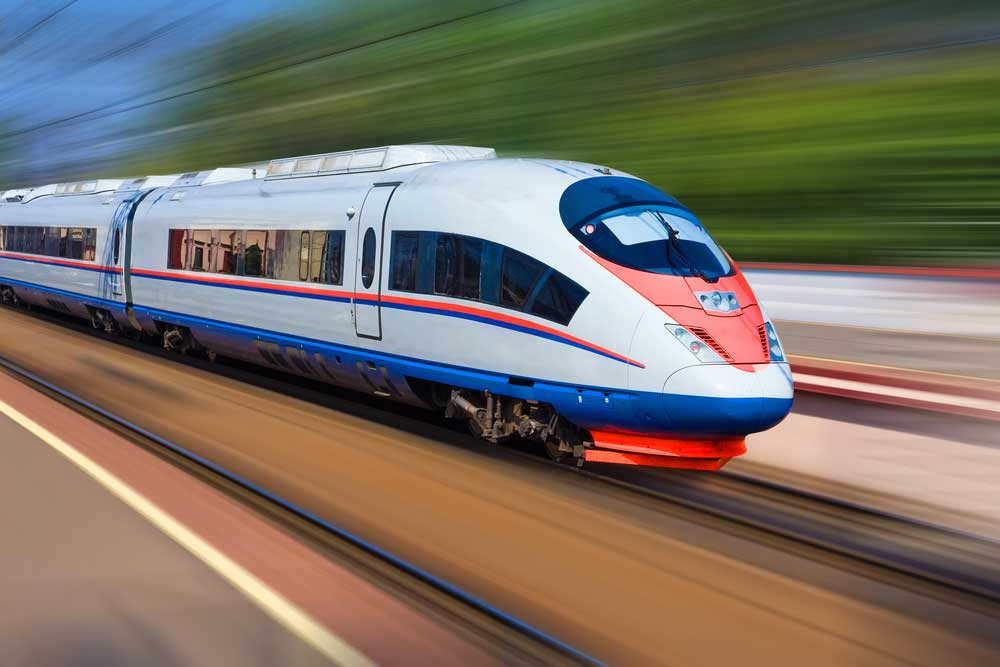The global imperative to decarbonize is reshaping industries, and the railway sector, a cornerstone of global logistics and transport, stands at a pivotal juncture. While traditional overhead electrification has been a solution in many parts of the world, its application faces unique economic and structural hurdles in markets like the U.S. freight rail system. This is where the rapidly evolving field of advanced energy storage, particularly battery technology, emerges not just as an alternative, but as a transformative force capable of redefining the future of rail.
In recent years, we've witnessed an unprecedented acceleration in energy storage innovation. What once seemed like a distant dream—powering heavy-duty, long-haul freight trains with onboard batteries—is rapidly becoming a tangible reality. This post will explore the remarkable advancements in battery technology and how these developments are making battery-electric trains an increasingly viable and compelling solution for the rail industry.
The Quantum Leap in Battery Capabilities
The journey of battery technology over the past decade has been nothing short of revolutionary. Several key trends are converging to make batteries more suitable than ever for demanding applications like freight rail:
- Skyrocketing Energy Density: One of the most critical metrics for mobile applications is energy density—the amount of energy that can be stored in a given volume or weight. Battery technologies, including various lithium-ion chemistries and emerging alternatives, have seen consistent and significant improvements in energy density. This means that today's batteries can store far more power in the same physical space (or an equivalent amount of power in a smaller, lighter package) compared to their predecessors. For rail, this translates to longer ranges between charges and the ability to power heavier loads without sacrificing excessive space or adding prohibitive weight.
- Enhanced Charging Speeds: Downtime is a critical concern for any freight operation. Historically, long charging times for large battery systems were a significant barrier. However, advancements in battery chemistry, thermal management, and charging infrastructure are dramatically reducing charging times. High-power charging stations and battery designs optimized for rapid energy intake mean that battery-electric trains can be "refueled" (recharged) much faster, minimizing operational disruptions and aligning more closely with existing logistics schedules.
- Plummeting Costs: The economic viability of any new technology is paramount. Alongside performance improvements, the cost per kilowatt-hour (kWh) of battery storage has fallen dramatically over the past decade. Manufacturing economies of scale, innovations in materials science, and more efficient production processes have all contributed to this downward cost trajectory. As battery prices continue to decline, the total cost of ownership for battery-electric trains becomes increasingly competitive with traditional diesel locomotives, especially when factoring in volatile fuel prices and maintenance savings.
- Improved Lifespan and Durability: Early concerns about battery longevity and performance degradation are also being addressed. Modern battery management systems (BMS) are more sophisticated, optimizing charging and discharging cycles to extend battery life. Furthermore, research into new electrode materials and electrolyte compositions is leading to batteries that can withstand more charge-discharge cycles with less degradation, ensuring a longer operational lifespan and better return on investment.
Beyond Lithium-Ion: The Expanding Horizon
While lithium-ion batteries currently dominate the landscape, the innovation doesn't stop there. Researchers and companies worldwide are actively exploring next-generation battery chemistries that promise even greater performance, lower costs, and improved safety. These include:
- Solid-State Batteries: Offering the potential for even higher energy densities, faster charging, and enhanced safety due to the absence of flammable liquid electrolytes.
- Sodium-Ion Batteries: Utilizing more abundant and less expensive materials than lithium, sodium-ion technology is emerging as a promising alternative, particularly for large-scale storage applications where cost and material availability are key considerations.
- Other Chemistries: Innovations in areas like lithium-sulfur and metal-air batteries also hold long-term potential for further breakthroughs.
This continuous pipeline of innovation ensures that the capabilities of battery storage will only continue to improve, further strengthening the case for battery-electric rail.
The Strategic Advantage for Rail
For the rail industry, particularly in regions where traditional electrification is challenging, these advancements in energy storage offer a compelling path forward:
The technological tide is turning. What was once a niche concept is now on the cusp of mainstream adoption. The remarkable progress in energy density, charging speeds, cost reduction, and lifespan of advanced battery systems is not just incremental; it's transformative. For the freight rail industry, this energy revolution on rails signals a future where decarbonization is not only environmentally imperative but also operationally smart and economically viable. The train of the future is increasingly looking battery-powered.
- Flexibility and Scalability: Battery-electric trains can operate on existing non-electrified tracks, eliminating the need for massive upfront investment in catenary infrastructure. This allows for a more gradual, scalable, and financially manageable transition to zero-emission rail.
- Operational Efficiency: Electric powertrains are inherently more efficient than diesel engines and require significantly less maintenance due to fewer moving parts. This can lead to substantial operational cost savings over the life of the locomotive.
- Energy Independence and Resilience: Utilizing battery storage, potentially charged from renewable sources like solar or wind (either trackside or via dedicated microgrids), can reduce reliance on fossil fuels and enhance energy security for rail operators.
- Environmental Compliance: As emissions regulations become stricter globally, battery-electric trains offer a clear pathway to achieving zero tailpipe emissions, helping rail companies meet and exceed environmental targets.
The technological tide is turning. What was once a niche concept is now on the cusp of mainstream adoption. The remarkable progress in energy density, charging speeds, cost reduction, and lifespan of advanced battery systems is not just incremental; it's transformative. For the freight rail industry, this energy revolution on rails signals a future where decarbonization is not only environmentally imperative but also operationally smart and economically viable. The train of the future is increasingly looking battery-powered.
